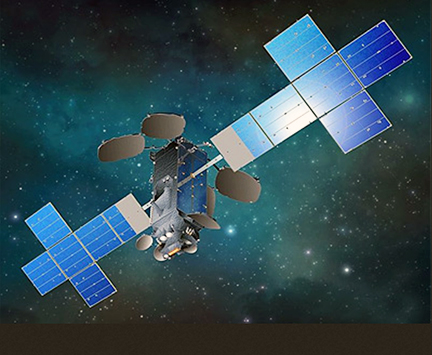

According to journalist Chris Forrester's post at the Advanced Television infosite, the upcoming launch of two communication satellites — one (I-39) for Intelsat and the other a scientific mission for the European Space Agency but which also includes a payload for Avanti (and is called Hylas 3) — has reportedly been delayed.

Originally expected to launch on a giant Ariane 5 rocket on July 24, the launch will now not take place before July 30th and could slip even further. The reason is the loss of a Vega rocket on July 10, which failed to carry a military satellite into orbit for the United Arab Emirates. The Vega vehicle is a smaller rocket but also operated by Arianespace. It fell into the Atlantic Ocean shortly after launch from French Guiana. Reports suggest that Arianespace is carrying out fresh checks on its normally ultra-reliable Ariane 5 vehicle.

Artistic rendition of the Intelsat I-39 satellite.
Intelsat I-39 will, once in operational geostationary orbit at 62 degrees East, replaces I-902, which itself was launched by Arianespace back in 2001. I-39 is a Maxar-built (formerly Space Systems/Loral) and will serve Africa, Europe, the Mid-East and Asia.
By the time of its replacement by Intelsat I-39, Intelsat 902 will have exceeded its expected 13-year design life by six years, or 45 per cent, which is an impressive use of orbital resources.

Journalist
Chris Forrester.
The new I-39 satellite has both C- and Ku-band transponders and will use hybrid electric and chemical propulsion to reach its orbit, where it is designed to provide service for a minimum of 15 years. Once on-orbit, the satellite will maintain its position using all-electric propulsion, which provides efficiency for satellite operators by reducing launch mass while increasing spacecraft flexibility and performance.

